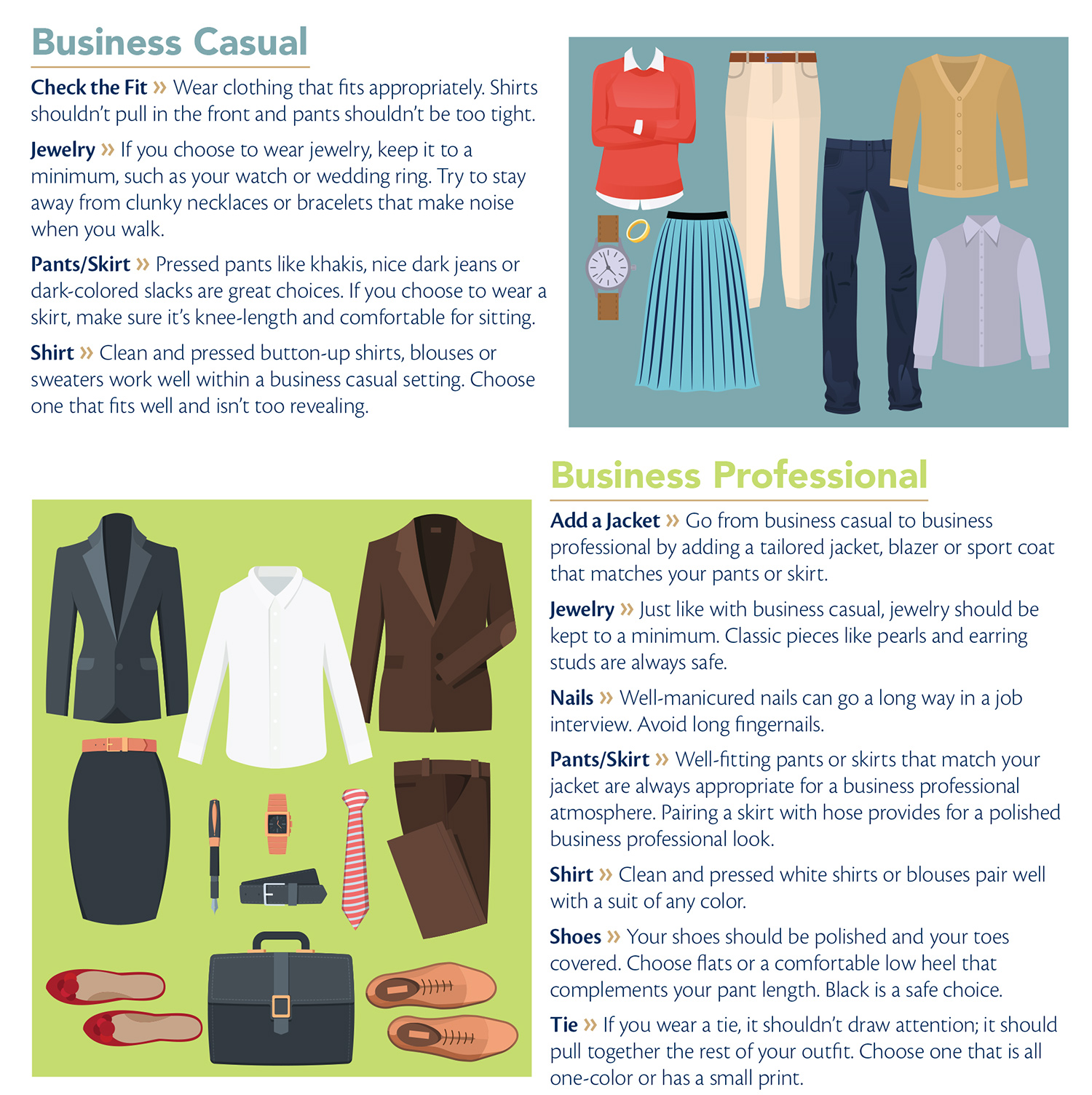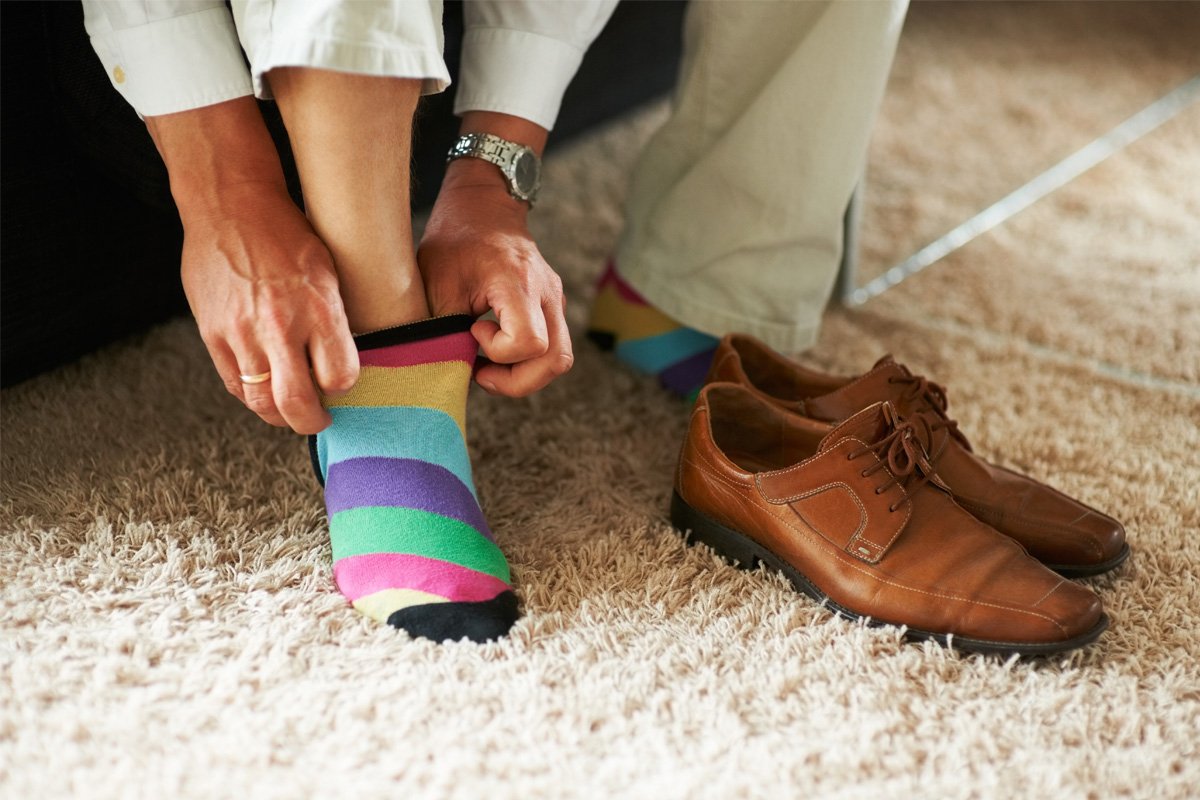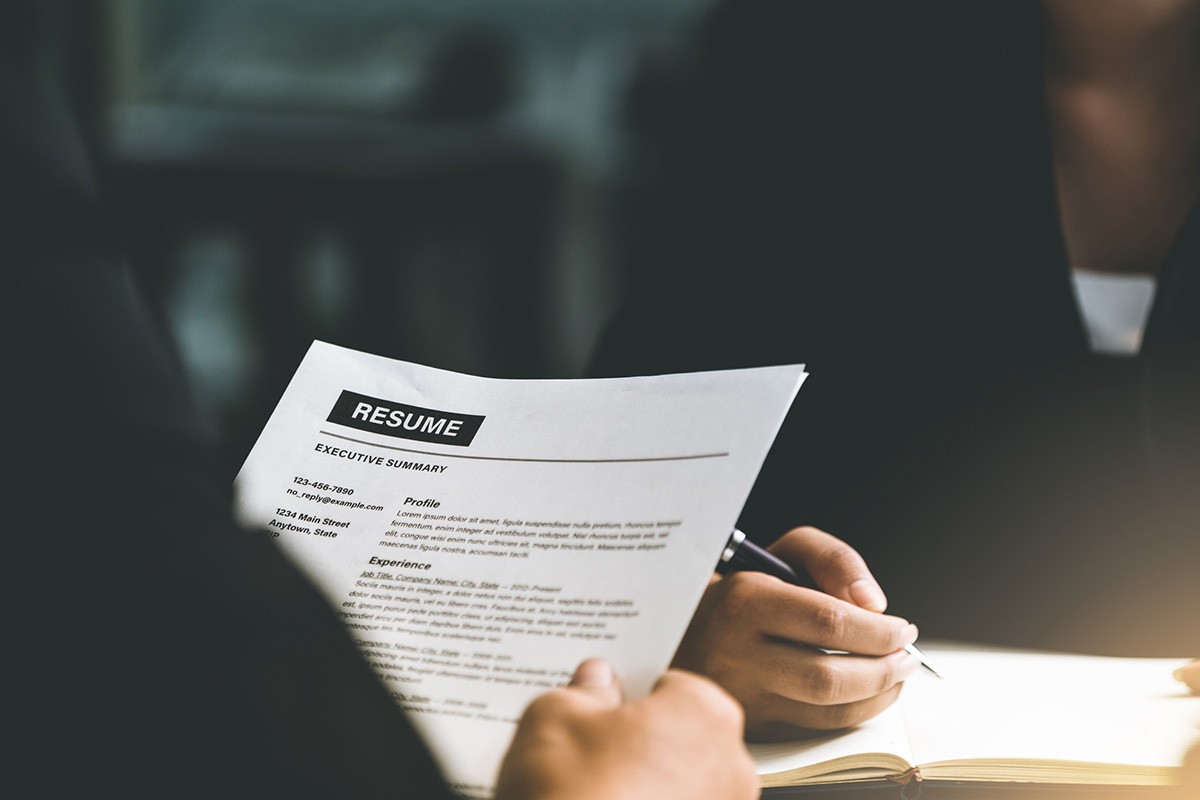Like it or not, first impressions are a big factor in job interviews. As humans, we form opinions of others within seconds of meeting each other, and those opinions can be difficult to change.
What we wear is a key element in ensuring we make a good first impression. When preparing for an interview, ask the hiring manager what the dress code is in the department where you are interviewing. If they are unsure or you don’t have time to ask, err on the side of caution and choose business professional. It’s always better to be overdressed than underdressed, and interviewers will likely appreciate you taking the time to look extra polished.
But, what does business professional look like, and what does business casual mean for an interview? In this guide, we provide examples showing the difference between business casual and business professional. We hope you make the best first impression possible and set the course for a stellar interview.

Business Casual
Check the Fit: Wear clothing that fits appropriately. Shirts shouldn’t pull in the front and pants shouldn’t be too tight.
Jewelry: If you choose to wear jewelry, keep it to a minimum, such as your watch or wedding ring. Try to stay away from clunky necklaces or bracelets that make noise when you walk.
Pants/Skirt: Pressed pants like khakis, nice dark jeans or dark-colored slacks are great choices. If you choose to wear a skirt, make sure it’s knee-length and comfortable for sitting.
Shirt: Clean and pressed button-up shirts, blouses or sweaters work well within a business casual setting. Choose one that fits well and isn’t too revealing.
Business Professional
Add a Jacket: Go from business casual to business professional by adding a tailored jacket, blazer or sport coat that matches your pants or skirt.
Jewelry: Just like with business casual, jewelry should be kept to a minimum. Classic pieces like pearls and earring studs are always safe.
Nails: Well-manicured nails can go a long way in a job interview. Avoid long fingernails.
Pants/Skirt: Well-fitting pants or skirts that match your jacket are always appropriate for a business professional atmosphere. Pairing a skirt with hose provides for a polished business professional look.
Shirt: Clean and pressed white shirts or blouses pair well with a suit of any color.
Shoes: Your shoes should be polished and your toes covered. Choose flats or a comfortable low heel that complements your pant length. Black is a safe choice.
Tie: If you wear a tie, it shouldn’t draw attention; it should pull together the rest of your outfit. Choose one that is all one-color or has a small print.
Conclusion
Here at Columbia Southern University, our Career Services team prepares students and alumni for job opportunities through one-on-one counseling, cover letter advice, interview preparation, and yes, clothing strategies.
For more information about our online degree programs at the associate, bachelor’s, master’s and doctoral levels, visit our website.






